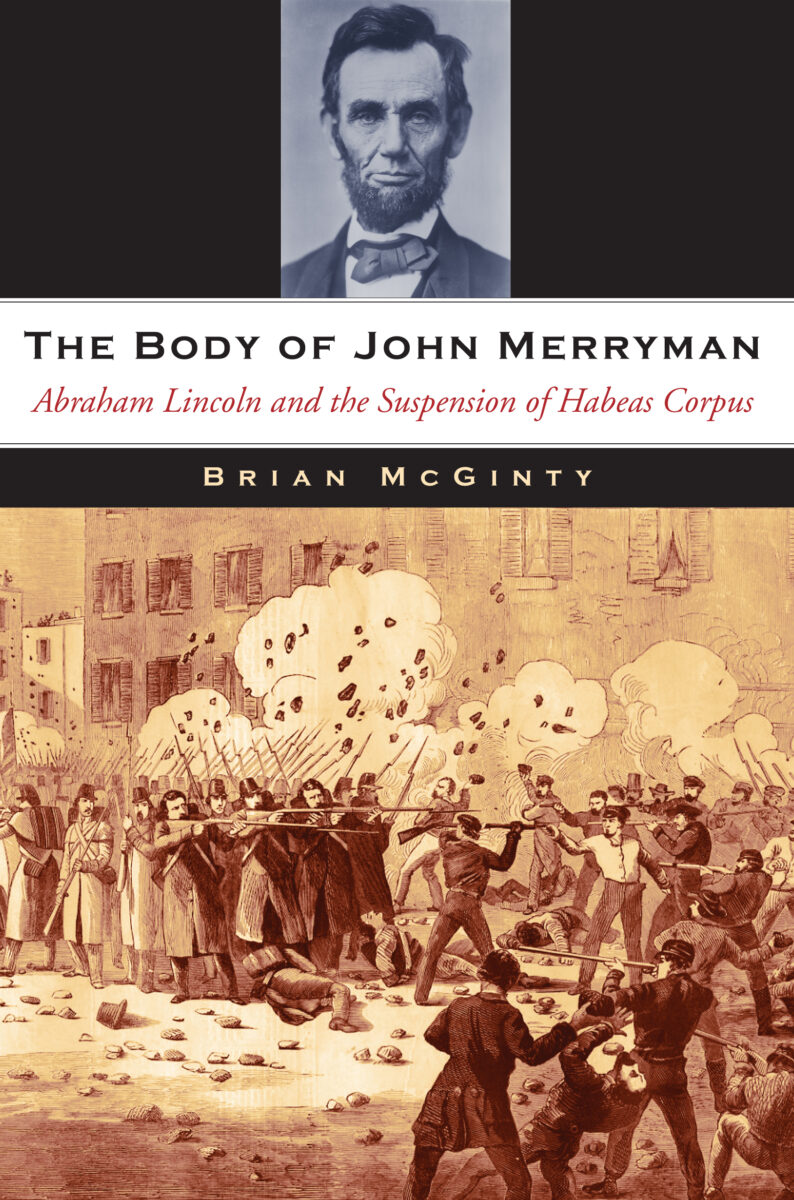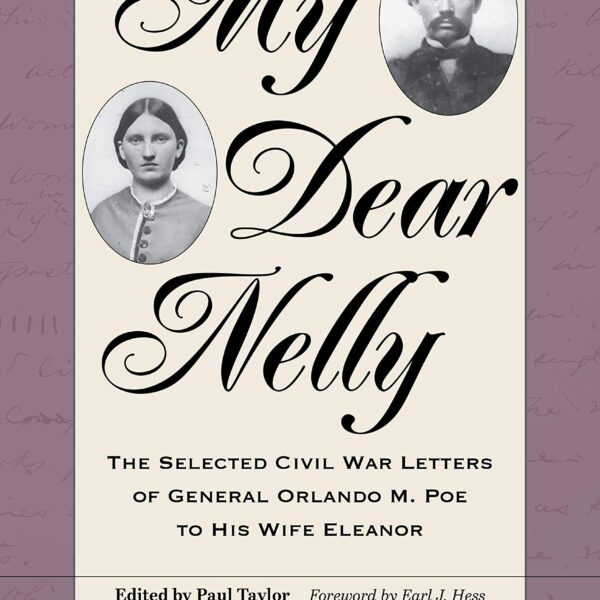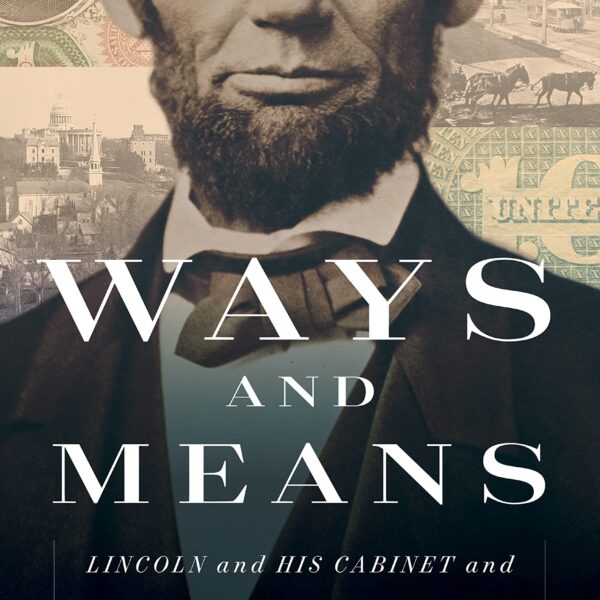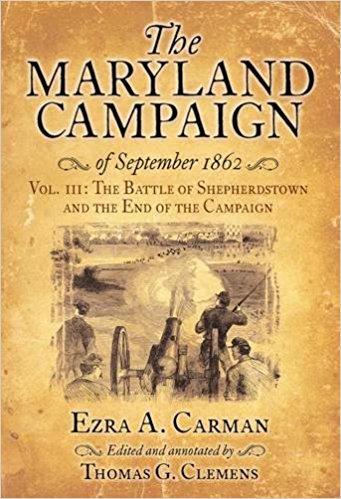Among the battles that Abraham Lincoln fought to restore the Union—against the Confederacy, against the opposition party, against members of his own party—his dealings with the Supreme Court and Chief Justice Roger Brooke Taney have received perhaps the least attention. That is understandable. The others may well have been more important, the Supreme Court always has been an elusive institution, and other presidents such as Andrew Jackson and Franklin Roosevelt have waged what were probably and ultimately more interesting warfare with the court. But the Supreme Court played a more significant role in the Civil War than many historians have acknowledged; a state of affairs that Brian McGinty has been trying to rectify. He has followed his study of Lincoln and the Court with this superb book that assesses the many angles of Ex Parte Merryman, perhaps the most important case that reached any member of that tribunal during the war.
John Merryman, a wealthy Marylander with Confederate sympathies, burned bridges to keep Union troops from coming through Baltimore. He was arrested and held in Fort McHenry, famous for the site where Francis Scott Key wrote “The Star-Spangled Banner.” If Key’s brother-in-law, Taney, “felt any emotional attachment to the national flag that was hauled down over Baltimore in April and May of 1861 …,” McGinty writes, “he concealed it effectively” (33). The aged chief justice ordered the fort’s commander, General George Cadwalader, to produce “the body of John Merryman.” When Cadwalader failed to do so, Taney issued his opinion declaring that Lincoln unconstitutionally suspended the writ of habeas corpus on May 28, 1861. That July 4, in his address to a special session of Congress, Lincoln carefully responded to Taney, famously asking, “[A]re all the laws, but one, to go unexecuted, and the government itself go to pieces, lest that one be violated” (100)? Ultimately, Congress approved of Lincoln’s actions, and the full Supreme Court, to Taney’s disappointment, never heard a case challenging the writ’s suspension.
But Merryman, and Taney’s and Lincoln’s responses to it, were far more complex than that summary suggests, and McGinty considers the matter from what seems like every conceivable angle. He examines Taney’s life and career to explain how his thinking evolved, how it did not, the significant question of whether he heard the case as a circuit judge or as chief justice, and the irony that his view of presidential power and deference to the judiciary ended up on the opposite side of his political patron, Andrew Jackson. Weighing how Lincoln viewed his powers and Taney’s, McGinty concludes that the president reached a sophisticated conclusion about how the executive and the judiciary interpreted the law that he had, indeed, honed on Taney’s Dred Scott opinion. McGinty provides an intensive study of how thoughtfully Lincoln drafted his rebuttal to Merryman, including how seriously his administration took Taney’s decision. He delves into state and local politics and public opinion in Maryland, which proved as conflicted as Taney’s judging, and into Merryman himself. He weighs the views of contemporary lawyers who spilled considerable ink praising and attacking Lincoln and Taney, and of historians who have analyzed Merryman’s contemporary relevance and its connections to Ex Parte Milligan, the 1866 case in which the post-Taney court shot down wartime military trials for civilians but in no way “vindicated” Taney’s earlier ruling, as McGinty faults historians for claiming (186).
McGinty also falters in a few places. Some of his transgressions are minor. He overstates Thomas Lincoln’s illiteracy and how hardscrabble his son’s Indiana years were, and Edward Bates’s inclusion in Lincoln’s cabinet also resulted from his prominence as a candidate for the nomination in 1860, not just his Missouri residence and reputation. More significantly, while McGinty correctly sets up Lincoln in relation to the “less resolute” James Buchanan by citing how the Democratic “‘cheerfully” submitted to Taney’s grab for judicial power in Dred Scott, he said nothing about how Buchanan helped influence the court’s opinion, suggesting a different view of legal ethics, interpretation, and the court than Lincoln’s (2). Further, in discussing how the Supreme Court addressed habeas corpus, he could have made more use of his own fine work in Lincoln and the Court to provide more detail about the roles played by Justices James Wayne, a southerner who declined to secede with his state, and Robert Grier, who came a long way after succumbing to Buchanan’s blandishments to join Taney’s majority in the Dred Scott case.
In the end, McGinty’s ruling favors Lincoln’s actions and response over Taney’s decision, which combined contradictions and dicta, much as he had in the Dred Scott case. Lincoln “took the actions he took, including the suspension of habeas corpus, because he believed that it was right for him to do so, and that the Constitution gave him the power to do so. His belief was not shaken by the fact that Roger Taney believed otherwise” (191). If anyone truly broke with precedent, it was Taney: “Never before had a judicial officer—much less the presiding justice of the highest court in the United States—taken so strong and so vehement a stand against executive authority,” McGinty points out at the outset (1-2). Never before has a historian so thoroughly and articulately explained this case and those involved in it, and all students of the Civil War and the Constitution are in his debt.
Dr. Michael S. Green is a Professor of History at the College of Southern Nevada.





